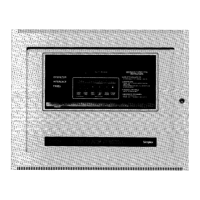Page 44
Document No: 4020-M010 1st February, 1997 Issue 2.0
10 APPENDIX
10.1 Alarm Verification Zone Processing
Alarm verification (AVF) is a technique to minimise false alarms on detector circuits
and operates as follows:
When a zone is detected as being in an alarm condition, the alarm condition is not
immediately processed. Rather the zone in alarm is reset for a period of 12 seconds
afterwhich it is then checked for an alarm condition. If the detector is still in alarm after
the 12 second alarm verification period then the alarm is processed as an alarm
condition and will operate programmed output functions.
If the zone is not in alarm after the 12 sec period, a timing window is activated for a
period of 150 seconds. Any alarms registered during this 150 second window will be
processed as an alarm condition and will operate programmed output functions. If no
alarm conditions are detected at the end of the 150 second window then the alarm zone
processing reverts back to the start of the AVF sequence.
10.2 AS1668 Zone Processing
This is typically used for an alarm zone circuit associated with supply air duct detectors.
These detector zones are non-latching zones. The smoke level must be such that it
causes the detector to be in alarm for a minimum period of time. Afterwhich any outputs
mapped to the AS1668 zone will be activated. To de-activate the mapped outputs, the
smoke level must be such that the detector is in a non-alarm condition for a minimum
period of time.
AS1668 detector zones are continually reset and checked for an alarm/non alarm
conditions.
Two AS1668 zone processing cycles are available:
(i) AS1668 - 30SEC: Minimum alarm period = 0 seconds
Minimum non-alarm time period = 30 seconds.
(ii) AS1668 - 60 SEC: Minimum alarm period 0 seconds and a continuos non-alarm
period of 65 seconds.

